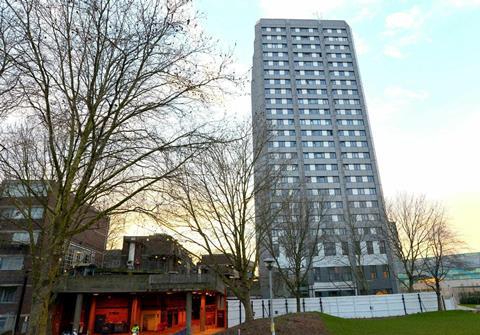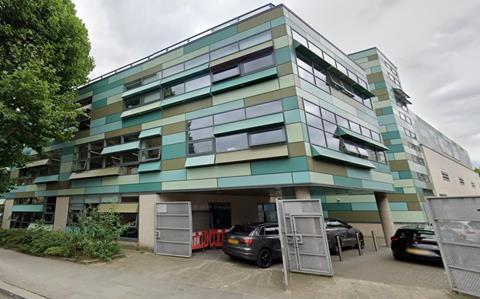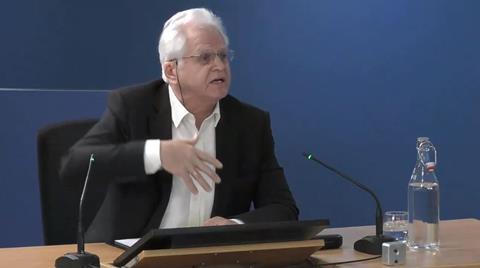Inquiry report states that Studio E had not been required to demonstrate that it had ‘the relevant skills, knowledge, or experience for such a project’

The Grenfell Tower Inquiry has raised significant concerns over the appointment of Studio E Architects to the high-rise refurbishment project, highlighting a series of procurement flaws and misjudgements that undermined the integrity of the process.
Studio E, an architectural firm with no prior experience in high-rise residential refurbishments or cladding, was appointed to the Grenfell Tower project in 2012. The inquiry report revealed that this decision was made without any competitive procurement process, raising serious questions about Kensington and Chelsea Tenant Management Organisation’s (TMO) approach to selecting the design team for the crucial refurbishment project.
At the time, it was the largest tenancy management organisation in England, overseeing nearly 10,000 properties on behalf of Kensington and Chelsea London Borough Council (RBKC). It was responsible for managing the entire council housing stock within the borough.
Although Grenfell Tower was owned by RBKC, its management was delegated to the TMO under a modular management agreement. While the decision to refurbish the tower, along with the provision of the necessary funding, was made by RBKC, the TMO assumed the role of the client. In this capacity, the TMO was responsible for procuring the services required to complete the refurbishment and overseeing the project’s execution.

The Inquiry described how the appointment of Studio E to work on Grenfell Tower was linked to the practice’s existing work on the neighbouring Kensington Aldridge Academy and Leisure Centre (KALC) project, which Studio E had already designed.
RBKC’s intention was to create a visual synergy between the two projects, and the inquiry found that “the initial motive for cladding Grenfell Tower was to improve its visual appearance” rather than to address urgent safety or thermal efficiency concerns.
According to the report, the TMO and RBKC bypassed a competitive tender process, instead opting to rely on Studio E’s existing relationship with RBKC from the KALC project.
More on the Grenfell Inquiry Phase 2 report
Grenfell Inquiry report: Studio E “bears a very significant degree of responsibility” for disaster
Decades of central government failure led to Grenfell tragedy, says inquiry
What were Studio E’s failures on the Grenfell Tower refurbishment?
The appointment was partly overseen by Mark Anderson, an architect with a background in private practice, who had transitioned into the social housing sector prior to his involvement with the Grenfell Tower project.
Appointed by the TMO as interim director of asset investment and engineering in March 2011, his role was later redesignated to Interim Director of Assets and Regeneration in April 2012, a position he held until January 2013. During this time, he was responsible for overseeing the initial stages of the Grenfell Tower refurbishment project.
In a stark admission Anderson acknowledged that “no steps had been taken before it was appointed to find out whether it [Studio E] had any experience of a project of that kind”.
The inquiry was critical of the decision to appoint Studio E without evaluating its experience, stating: “The process of appointing Studio E as architect for the Grenfell Tower project did not require it to demonstrate that it had the relevant skills, knowledge, or experience for such a project.” This lack of scrutiny, the report said, deprived the TMO of the opportunity to potentially select a more experienced firm, potentially one better suited to managing the high-risk elements of a high-rise cladding project.

In fact, Studio E’s own internal discussions expressed concern over the scope of the work. An email from Bruce Sounes, a lead architect at Studio E, to practice founder Andrzej Kuszell on 29 February 2012, described the firm as “a little green on process and technicality” and suggested that “some rapid CPD” (continuing professional development) was necessary to bring the team up to speed on the complexities of working on an occupied high-rise building.
Sounes explained that when he described Studio E as “green on process,” he was referring to the logistical challenges of carrying out work on an occupied building.
He acknowledged that overcladding was part of the project and had initially presented itself as a challenge, though he clarified that the difficulty lay more in the fact that the building would remain occupied throughout the refurbishment, rather than in the cladding itself.
By “rapid CPD,” he said that he had meant a consultation to assess how the work could feasibly be completed, which he said he had undertaken with an employee from Max Fordham, the mechanical and electrical engineers involved in the KALC project.
Sounes stated that his initial concerns about the project had been eased and that, despite some early uncertainties, he believed Studio E had the necessary experience and expertise to carry out the work. He admitted that he had ultimately decided it would be possible to learn as the project progressed.
The inquiry further revealed that Studio E’s fees were deliberately kept below the threshold that would have triggered a public procurement process. Anderson admitted that his intention was to “direct Studio E to produce a fee estimate that would fall below the financial threshold for services contracts in order to avoid a public procurement process.” This approach effectively capped the fees, circumventing the rules designed to ensure transparency and competitive bidding for public projects.
In a striking passage, the report stated: “The appointment of Studio E as architect for the project involved no element of competitive procurement whatsoever.” The inquiry found that no interviews or design competitions were held, and that Anderson’s reliance on a previous KALC procurement notice to justify Studio E’s involvement in Grenfell was “obviously mistaken.”
The inquiry states that Studio E’s lack of experience should have been highlighted immediately, but that despite obvious flaws in the process, both RBKC and the TMO failed to act. The report emphasised that “by failing for purely financial reasons to follow the proper procurement process, the TMO deprived itself of the opportunity to appoint a firm of architects with relevant skills, knowledge and experience.”
In its conclusion, the inquiry criticised the “casual approach to the establishment of contractual relations” between Studio E and the TMO, noting that no formal agreement was ever signed. This lack of rigour, it suggested, was symptomatic of wider failures in how the project was managed and how responsibilities were assigned.
Both Kuszell and Sounes conceded during the inquiry that, given Studio E’s lack of relevant experience, it was unlikely the firm would have qualified for appointment had a competitive procurement process for architectural services been conducted for the Grenfell Tower project.
















No comments yet